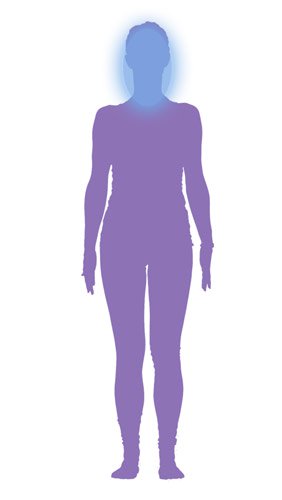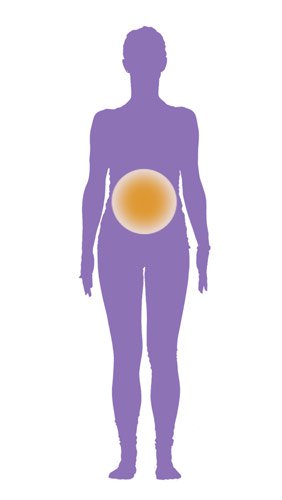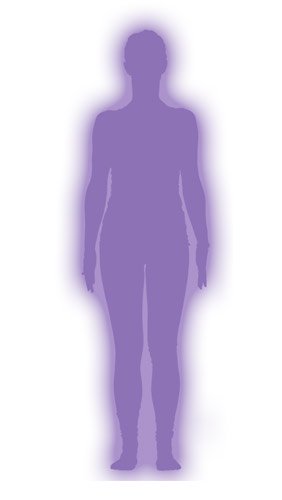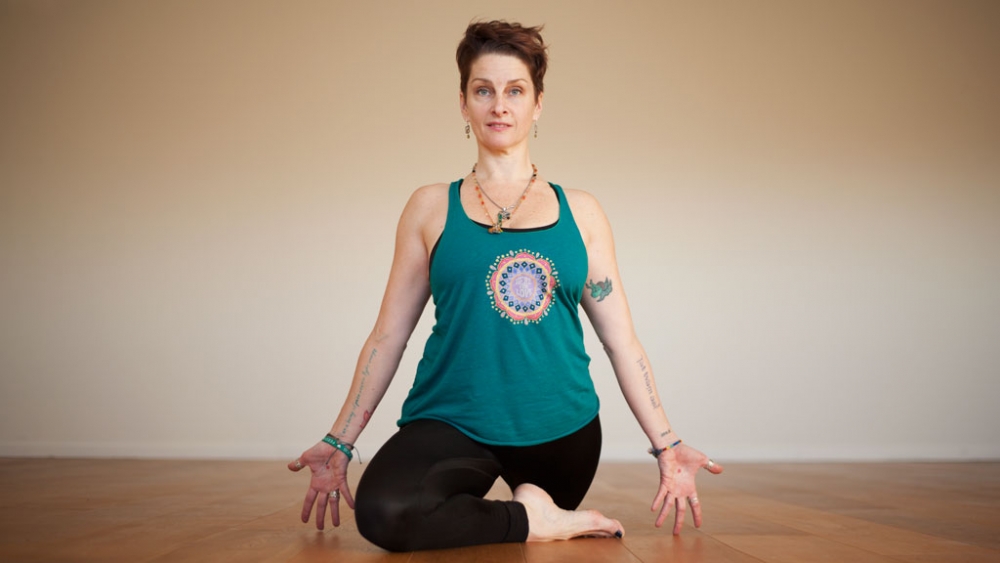It is so exciting to watch the numbers of people practising yoga grow exponentially day by day. The BBC reported back in 2009 that 30 million people worldwide were practising yoga. Since then, USA Today recently reported more than 24 million people practice yoga in the US alone. Unfortunately, this means yoga related injuries are on the rise as well. According to the US Consumer Product Safety Commission, there were 7,369 yoga-related injuries treated in 2010 (an increase from 3,700 in 2004 and 5,500 in 2007).
With the invention of more and more fun hybrids of yoga with fitness, martial arts and acrobatics arriving on the yoga scene every season, the numbers of both practitioners and injuries are rising.
A five-step process to prevent yoga-related injuries
As a massage therapist, fitness and yoga teacher, and anatomy teacher to yoga teachers in training, I have worked with thousands of students and their injuries. While the injuries they have accrued off the mat vary tremendously, on the mat injuries witnessed are universally similar – most often these are injuries of the shoulder/rotator cuff and the extremities of the shoulder (elbow and wrist), the lumbar spine and the sacroiliac joint.
After 11 years of hearing others tell me their woes, learning about the human body and studying how it works, figuring out the intricacies of our perfect working organism through my own personal injuries, and educating others in my trainings and travels, I have come up with a five step process for injury prevention and yoga practice longevity:
In this article we start with Breath and it’s relation to Prana. Exploring the different qualities (Vayus) of Prana and how by following the natural movements of breath and the vayus we can move with efficiency and grace.
The importance of the breath in preventing injuries both on and off the yoga mat
In the Prashna Upanishad it is written, “Of what is Prana born? How does it enter the body? How does it live there after dividing itself? How does it leave the body? How does it hold the body together, the senses together, the mind together?”
What is this Prana that this ancient text is referring to? What is the Prana that we yoga teachers refer to as Life Force Energy coursing through the body, inspiring and initiating all movement?
Prana is considered to be the vital energy that permeates everything in existence.
Prana is the life force that infuses each and every one of the sweet breaths that comes into our bodies with tremendous inspiration to move, grow, create and transform.
It is written in the Vedas that the five main faculties (mind/thoughts, prana/breath, speech, hearing and seeing) were arguing about who was most important to the life of the human body. It was only when prana/breath left the body that the body began to wither, decay and die; all other faculties could be lived without. It is only by the intake of Prana, via breath (and by ingesting plants and animals that breathe) that we ourselves stay vital; without Prana we expire.
There are said to be more than 30 characteristics of Prana and that we can connect to, and emulate, five of them. In the simplest sense these five qualities can be described as upward, downward, expansive, contractive, and circulatory.
If allowed to flow freely without any physiological, psychological or energetic blockages, life force energy via breath inhaled wants to propel us forward and up; life force exhaled wants to draw us back and down, and in the pause between our inhales and exhales (or when we find ourselves in utter stillness) the swirling sensations of life can be felt coursing through our body.
You can read more about the breath and follow breath technique classes in the 10 Days of Pranayama programme.
Just like wind moves both seen and unseen through the flowers, the trees, our curtains and our hair, Prana moves throughout this world as Vayus (winds). David Frawley writes, “Vayu is the universal power of action from which all other powers emerge.”
The five vayus are:
- prana (inward, inspiring energy)
- apana (downward, eliminating energy)
- udana (upward, creative energy)
- samana (inward, churning energy) and
- vyana (pervasive, circulatory energy)
If we can learn to connect to and move with the natural rhythms of Prana we will always find ourselves in safe shapes and patterns.
Prana-Vayu: Drawing Life Force In and Inspiring Action
heart and lungs, inwards and inspiring
As babies once we arrive out on this earth we gasp and take in our first breath with newly formed lungs. In this simple moment of pure instinct, we join in the primal and necessary act of breathing in the oxygen/nitrogen/carbon dioxide mixture that is essential for our survival. Every organ, every muscle, every bone, every cell requires us to take Prana into the body; every breath drawn in, as well with the food and drinks we imbibe, is utilized in some way. When Life Force enters the body as Prana-Vayu the other four Vayus are inspired to initiate.
When we inhale our lungs expand to receive the nutrient-rich/prana-filled air that we breathe. If we could be intimately aware of how our body expands with every breath we take, we may notice just how each breath wants to initiate movement. We may notice how this inhale RIGHT NOW wants to inspire us to forward and up action.
Apana-Vayu: Let It Go and Let It Flow
lower abdomen, downwards and outwards
So often we are told by our yoga teachers, our family, our friends and therapists to “Let It Go…Exhale and Let it Go.” What does this mean…to let go? On a physical, psychological, or emotional level is it as easy as these well-wishers make it out to be? To decide to let go of past hurts, past disappointments, past angers and resentments, and then actually exhale and let it go?
Can you really release old stories from the muscles, the fascia, the cellular make-up of the body in order to live a life free of tension, tightness or dis-ease? Is it actually possible to soften the space around the heart where grief has decided to build a dense, seemingly impenetrable wall in order to once again bask in the rays of the sun?
By working on an intimate level with Apana-Vayu we can understand the answer to be yes!
Experienced on an exhale, Apana Vayu is the downwards and outwards characteristic of Prana. It is grounding, rooting and relaxing. This Vayu moves through the lower abdominal region and governs the elimination processes. Often people that can not “let go and flow” find themselves bound up, constipated and stuck.
When life’s strong winds come blowing, bend with them and let go. By bending you will become stronger in new places. By letting go you will be making room for the new and better. Karen Salmansohn

Udana-Vayu: Communicating the Truth of Our Highest Selves
throat, brain and face, upwards energy
Often we only connect to the in (prana) and down (apana) qualities of Prana. It is very normal to be aware of the sensation of breath and other nutrients entering into our body and traveling downward, whether down into the lungs or the belly. It is quite a different perspective to connect to the in and upward quality of breath.
Try it…Inhale in and let the breath immediately travel up your throat, into your eyes, to the hair follicles on the very top of your head. Don’t you feel taller, lighter, lifted…smarter even? This upward quality of Prana is Udana-Vayu.
Udana-Vayu governs the throat, the brain and the face. It nourishes and fuels how we see and interpret our surroundings, and how we express our reactions to this perception. This quality of Prana affects how we think and dream and how we effectively communicate these thoughts and dreams to the world around us. Working with Udana-Vayu allows us to affect positive changes in our minds (if you can think it you can be it!) and affects positive changes in the body (where your eyes go your body will follow). Drishti is directly related to this Vayu.

Samana-Vayu: Sacred Fires of Agni Transform
navel and abdomen, contraction
Alchemists need heat in order to transform one material into another. In order for us to take the life-giving nutrients of Prana and transform them into something our bodies can use for movement and growth, we need the heat that churns deep in our bellies. It is written that Agni (fire) is responsible for all transformation in this world and thus, all possibilities in this world. Learning about and working with the churning fires that digest and assimilate what we take into our bodies will inform us about what choices to make in this world, in accordance with what dreams we want to actualize. What we take in equates to what we produce and give out.
When we exhale and contract we are hugging the very insides of our being. If we work with the energy of Samana-Vayu we will begin to notice and appreciate the subtle workings of all the organs in our abdominal cavity. Whereas inhales inspire awareness of our thoracic cavity (lungs and heart), and (now with the knowledge of Udana-Vayu) our throats, brains and faces, our exhales draw us into the fires of the belly. It is here that we are actually processing and making available all the gifts that Prana has just offered us. This is why we don’t want to eat right before we practise (or perform any rigorous activity) – we want to allow the energy that it takes to digest and assimilate to be efficient. Not to have to compete with the energy it takes to move our limbs into difficult asanas, the energy it takes to increase our cardio and respiratory output in our vinyasa flows and/or the energy it takes to think about mastering the next pose we are challenging ourselves with in our practice.
Be with your exhales until the very end of them…hug your insides!

Vyana-Vayu: Selfless Service from Center of Your Being
whole body, circulatory, expansive
When we give in selfless service to our fellow human beings we give from the deepest parts of ourselves. Often to we have dig down through the layers of our being, down deep through the layers of our life to find just what it is that we want to to offer, to share and to give selflessly. Once found, our essence, our gift, our Dharma spreads throughout our body (our magnificent vehicle on this earth) and then beyond to those around us. When we connect to that source within that inspires tremendous enthusiasm, love, happiness and boundless peace – we can’t hold back! Whether it be physical action (physical affection, taking care of others) or energetic intentions (meditating in a state of loving-kindness) what we have inside us, when connected to, can not be contained.
Vyana-Vayu is the pervasive and expansive energy of Prana. It is the circulation, the spreading, and the filling out of all available space with creative life force energy. It supports and balances the other four vayus. Awareness of the body in its entirety…not merely associating with its individual parts…is Vyana-Vayu in action. The practice of yoga is extremely beneficial in our connecting to this vayu. Often we come to the mat like Humpty Dumpty – our lives and what we do in them having torn us apart a bit. With breath, asana and intention we awaken from our Savasana and leave the mat put back together again…aware of the body in its natural wholeness vs its often fragmented state.
Awareness of the body in its entirety…not merely associating with its individual parts…is Vyana-Vayu in action. The practice of yoga is extremely beneficial in our connecting to this vayu.
Move your body with the breath for efficiency, ease and grace
To move with these five characteristics, to play and dance both on and off the mat in these five natural Pranic rhythms, will afford each and every one of us a high quality of life full of ease and grace.
Once having attained knowledge of Prana and awareness of the qualities of the 5 Vayus, the risk of injury, both on and off the mat, is reduced. Making the intimate connection between breathing and moving guarantees that you will navigate more safely and efficiently through your life.
Inhale: forward, up and expansive movements
Exhale: back, down and contractive movements
Gracefully you will move your torso and limbs forward and up as you inhale and then, when the time is right (maybe after a pause in stillness) you will exhale, hug your insides and move back and down. On an inhale you will lift and expand out into your Utthita Hasta Padangusthasana, pausing in celebration (maybe because you can do the pose AND say the Sanskrit!) and then, on a long slow exhale, with precision, contract and move back to Virabhadrasana 3. Inhales… we reach up to get something off the top shelf…exhales…we reach down to pick our puppy’s toy off the floor.
If we ride the waves, the pulses, and the movements of our breaths life then becomes a beautiful, intelligently and creatively orchestrated dance.

